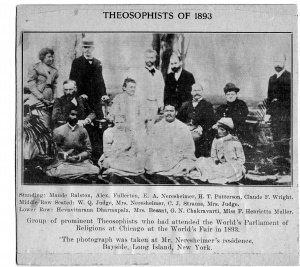Henrietta Müller facts for kids
Henrietta Müller (born 1846, died 1906) was an important person who worked for women's rights. She was from both Chile and Britain. She also followed a spiritual belief called Theosophy.
Early Life and Education
Henrietta Müller was born in Valparaíso, Chile. Her father, William Müller, was a German businessman. Her mother was Maria Henrietta Müller. Henrietta did not go to a regular school much when she was young. However, she learned to speak six different languages.
In 1873, she was accepted into Girton College at the University of Cambridge in England. While at Cambridge, she became very interested in the feminist movement. This movement worked to gain equal rights for women. She helped start groups called women's trade unions. These groups helped women workers. She also helped create the Women's Printing Society with a woman named Emma Paterson.
Working for Change
Müller left Cambridge in 1878. That same year, she ran for a position on the London School Board. She won the election and became one of the first women to join the board. While on the board, she convinced them to hire more women. She also helped set up the first living place for women students in Bloomsbury. This place was called College Hall. She left the board in 1885.
In 1883, Müller and others started a group. It was called the Society for Promoting the Return of Women as Poor Law Guardians. They believed that women were best suited to help manage the Poor Law system. This system helped people who were poor. She was also part of the main committee for the National Society for Women's Suffrage. This group worked to get women the right to vote. Müller also supported the temperance movement, which aimed to reduce alcohol use.
Writing and Theosophy
Müller wrote many articles for a magazine called Westminster Review. Her articles talked about how unmarried women could become more independent. She also wrote about her ideas on marriage at the time. In 1888, she started her own newspaper. It was called The Women's Penny Paper. Later, it was renamed The Woman's Signal. This was the first newspaper for women in London. She edited the paper using a special writing name, or nom de plume, which was Helena B. Temple.
Around 1891, Müller started to step back from politics and her work for women's rights. She joined the Theosophical Society. This was a group that studied spiritual and philosophical ideas. In 1892, she traveled to India. She gave talks there for the society. She became known as "the famous woman-suffragist."
In 1893, she met Swami Vivekananda at a big meeting called the Parliament of the World's Religions. After this, she helped edit some of his books. One of these was Lectures from Colombo to Almora, published in 1897. In 1895, she adopted a son from Bengal. Later, she moved to China and then to the United States. She passed away in 1906 in Washington, D.C.. She left her money to her sister, Eva McLaren. Eva was also a women's rights activist. Henrietta did not mention her adopted son in her will.
See also
 In Spanish: Henrietta Müller para niños
In Spanish: Henrietta Müller para niños



